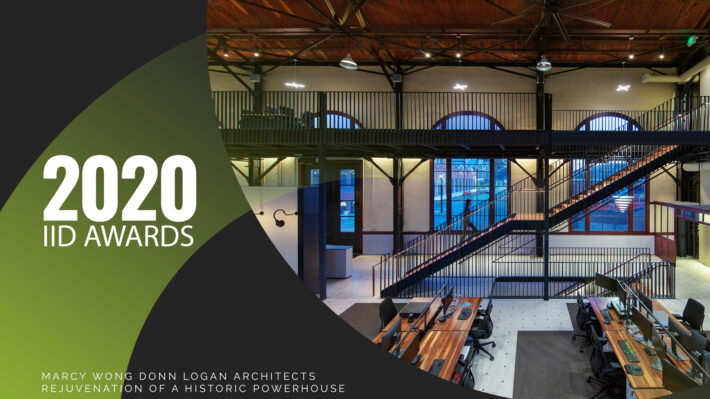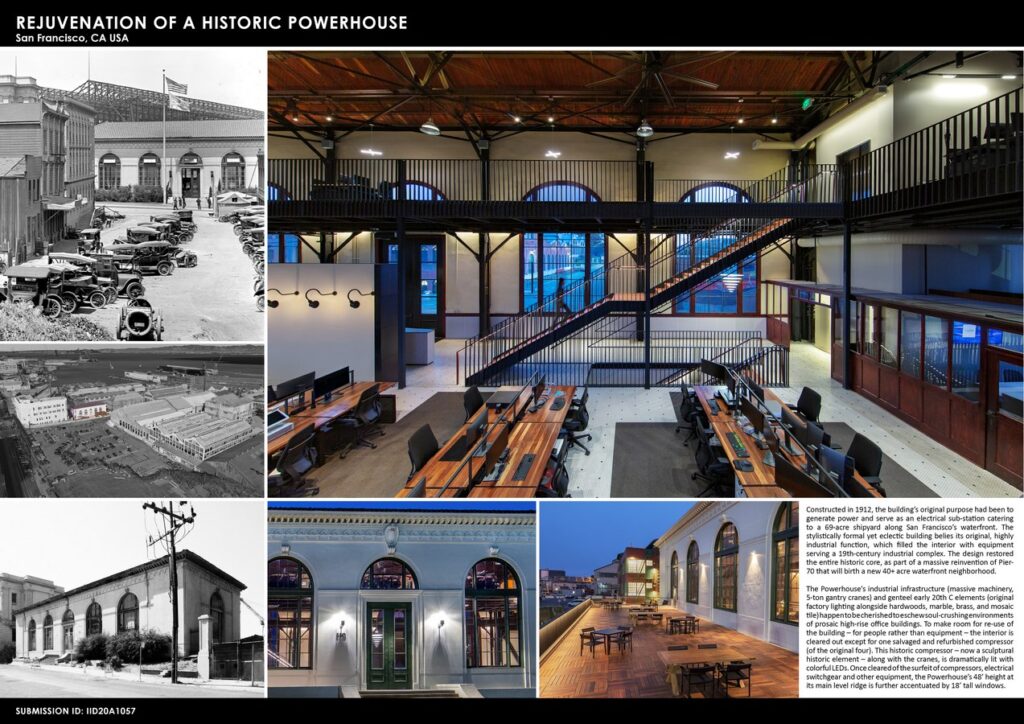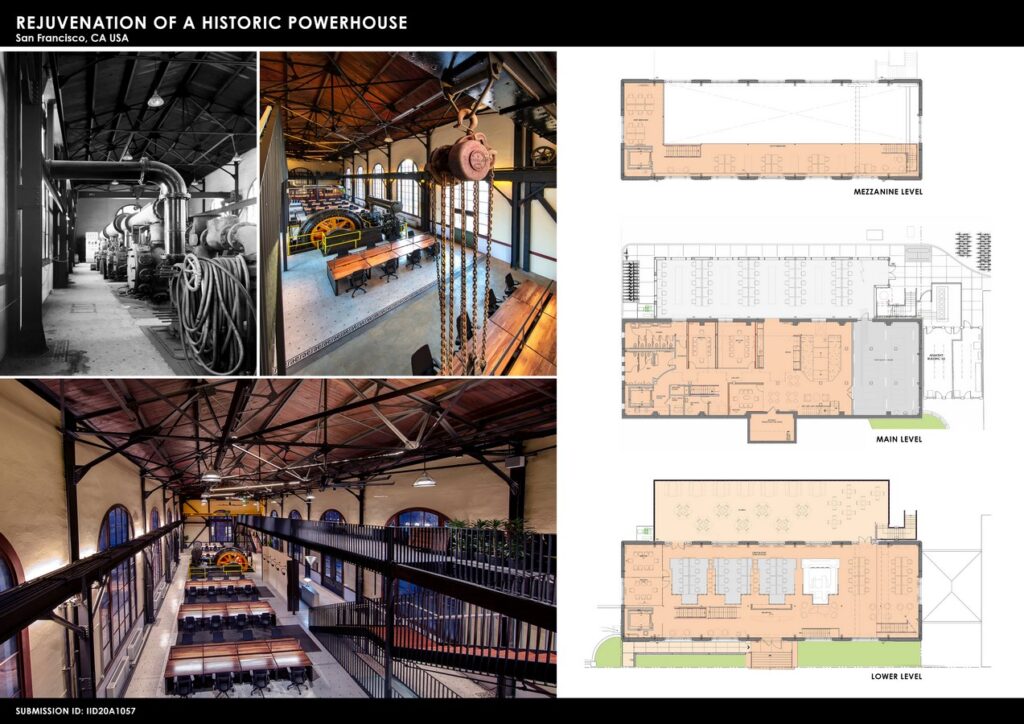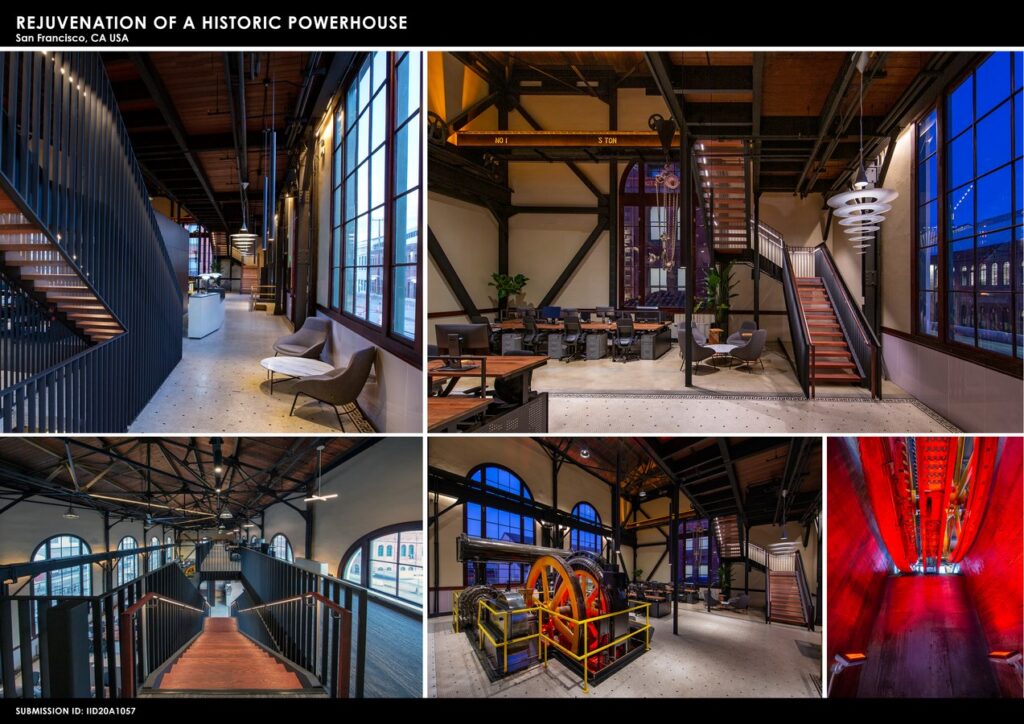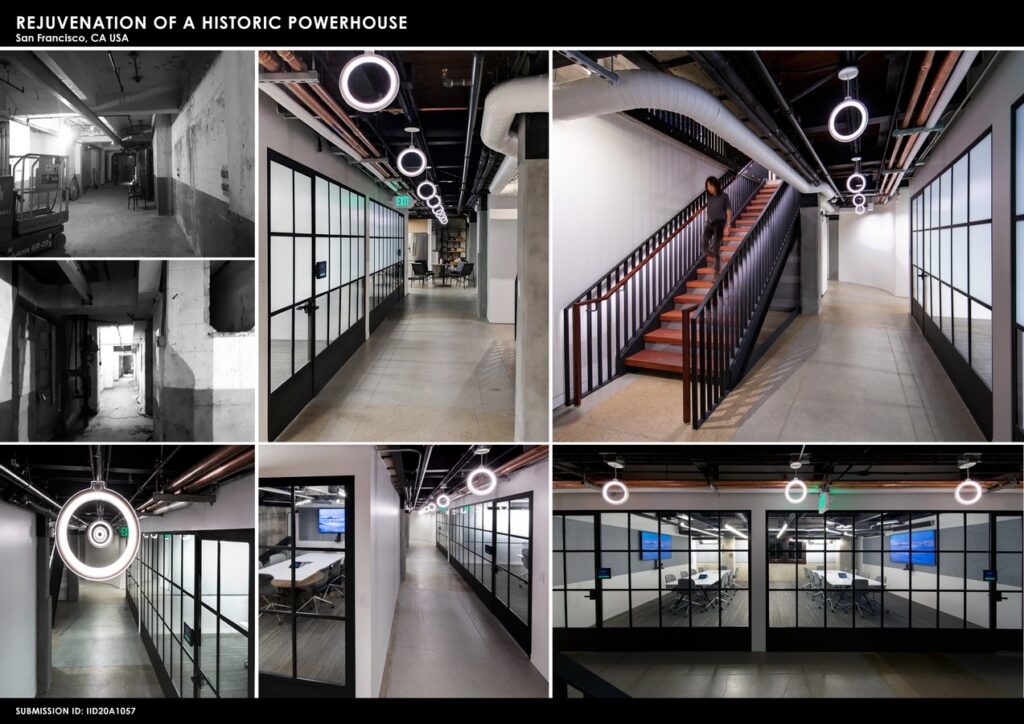Constructed in 1912, the building’s original purpose had been to generate power and serve as an electrical sub-station catering to a 69-acre shipyard along San Francisco’s waterfront. The stylistically formal yet eclectic building belies its original, highly industrial function, which filled the interior with equipment serving a 19th-century industrial complex. The design restored the entire historic core, as part of a massive reinvention of Pier-70 that will birth a new 40+ acre waterfront neighborhood.
Honorable Mention – International Interior Design Awards 2020
Firm | Marcy Wong Donn Logan Architects
Designer | Marcy Wong Donn Logan Architects
Project Category | Office Building Interior Built
PARTNER: Port of San Francisco
DEVELOPER: Orton Development Inc
HISTORIC PRESERVATION: Preservation Architecture
STRUCTURAL ENGINEER: Nabih Youssef Associates
LIGHTING DESIGN: Architecture & Light
MECHANICAL DESIGN-BUILD CONTRACTOR: Allied Heating & Air Conditioning Co.Inc
ELECTRICAL DESIGN-BUILD CONTACTOR: Helix Electric
LANDSCAPE ARCHITECT: GLS Landscape Architecture
Country | United States
Photographer/Copyright | ©Billy Hustace
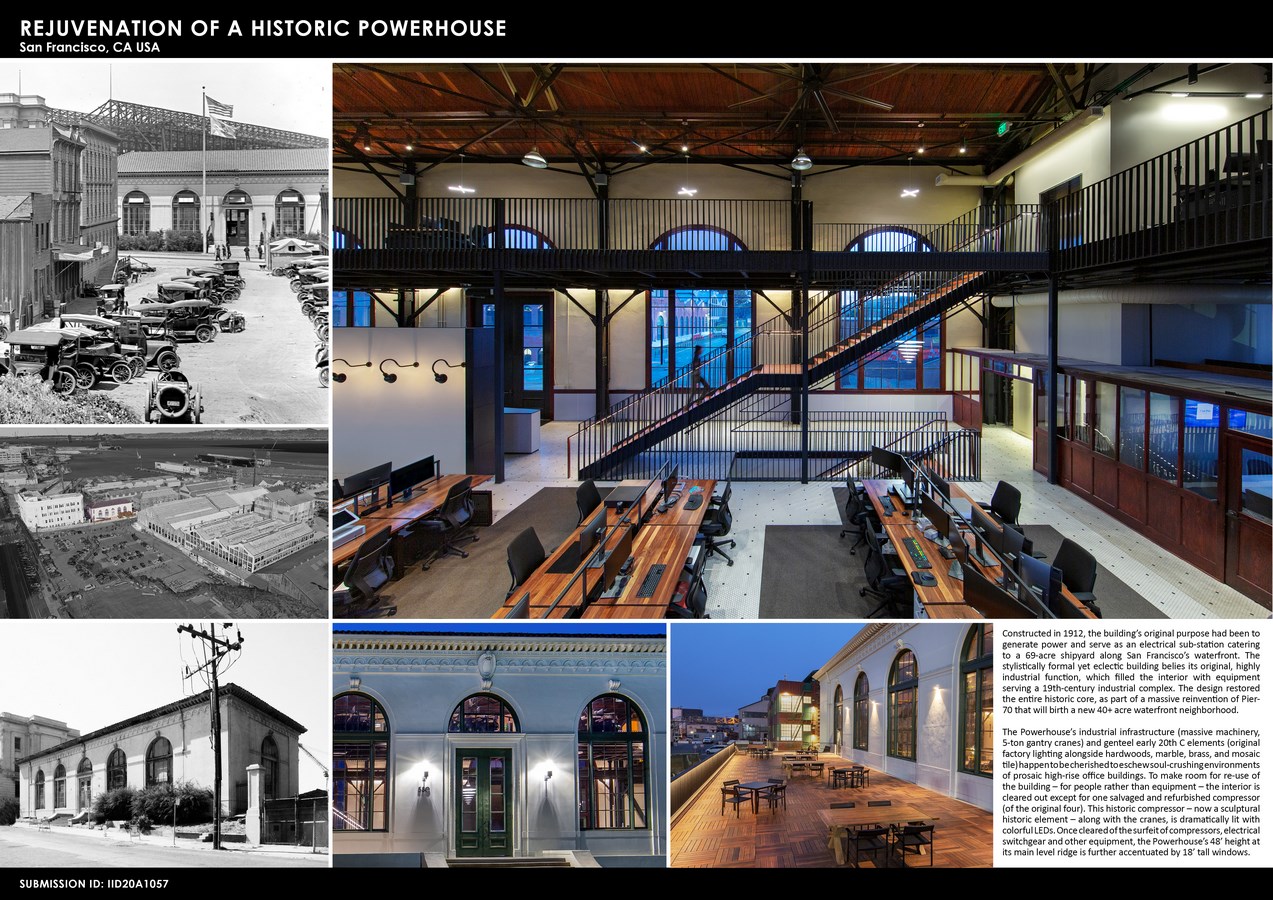
The Powerhouse’s industrial infrastructure (massive machinery, 5-ton gantry cranes) and genteel early 20th C elements (original factory lighting alongside hardwoods, marble, brass, and mosaic tile) happen to be cherished to eschew soul-crushing environments of prosaic high-rise office buildings. To make room for re-use of the building – for people rather than equipment – the interior is cleared out except for one salvaged and refurbished compressor (of the original four). This historic compressor – now a sculptural historic element – along with the cranes, is dramatically lit with colorful LEDs. Once cleared of the surfeit of compressors, electrical switchgear and other equipment, the Powerhouse’s 48’ height at its main level ridge is further accentuated by 18′ tall windows.
A new mezzanine level is constructed along the south and the west sides of the structure, providing an overview of the main level. The mezzanine structure and the stairs leading to it are the most significant architectural interventions within the old building. The heavy-timber construction of the new mezzanine and new stair treads is detailed to complement the exposed historic wood roof structure above, while the new steel balustrades at mezzanine guard rails and stair recall the historic exposed steel roof trusses.
The building’s main level and mezzanine are blessed with abundant daylight and views. In addition to this, the building has a lower level, which has low ceilings and is below grade along one side. The daylight-deprived areas accommodate bathrooms, conference rooms with video projection, bathrooms, and kitchen. A new 2,600 SF addition to the lower level provides daylit open work area while the roof of the addition provides a deck accessible from the building’s main floor level; both deck and main level overlook a City park and a bridge beyond.
Throughout the building, the architectural lighting is instrumental in transforming the interior from an electrical powerhouse to a humane and uplifting environment for the technology workers. These elements do not imitate the Powerhouse’s historic architectural features, but rather enhance by contrast.


